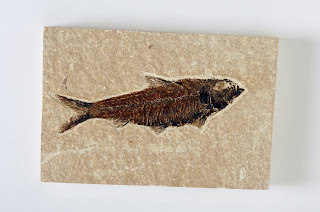
Ammonites are often the first thing people thing of when fossils are mentioned. Their spiral-shelled form is iconic in palaeontology; memorably beautiful, appealing to artists and mathematicians alike.
They appeared in the Devonian, and died out alongside the dinosaurs during the extinction event at the end of the Cretaceous, 65 million years ago. Meantime, they survived two big extinctions, at the ends of both the Permian and Triassic. Tough cookies.
They are incredibly useful stratigraphic markers, providing clues as to the age of the rock layers they are found in, and by extension, helping show relationships between bodies of rock in different parts of the world.
The name ammonite comes from the Egyptian god Amun, who was, towards the latter part of his career as a deity, depicted as having the head of a ram. Rams, as most of you will know, have nice, tightly coiled spiral horns, and the resemblance to ammonites is obvious. See how convoluted I've managed to make this explanation? Pliny the Elder named the fossils he was finding after the horns of Amun. Pliny the Younger named them poo-stones (in Greek) and got a clip round the ear.

Going off at a bit of a tangent for a second, here, I love how the ancient Egyptians gave their gods animal heads. Real character. Maybe there were some that didn't get much press that had other animal body parts. A god with the legs of a chicken? The arms of a bear?
It is often assumed that the closest living relative of ammonites is the nautilus, and it's easy to see why. Most recent study, though, suggests that the octopus may be the true relative. Now a god with an octopus for a head - there's a winner. Don't think Cthulhu counts...
There's a fair bit of mythology attached to the ammonite. St Hilda of Whitby in the middle 600s AD was supposed to have killed all of the snakes in the area by decapitating them with her whip - the ammonites found around the Yorkshire coast were assumed to be the remains. Local craftsmen have carved heads on them to form lucky snakestones for centuries. In 5th Century India, ammonites were regarded as the embodiment of a god, 17th Century Germans considered them a charm against witchcraft, and many North American plains tribes carried them for good luck, too.
For me, though, they are simply one of the most appealing forms in nature. There's something magical about the spiral.


